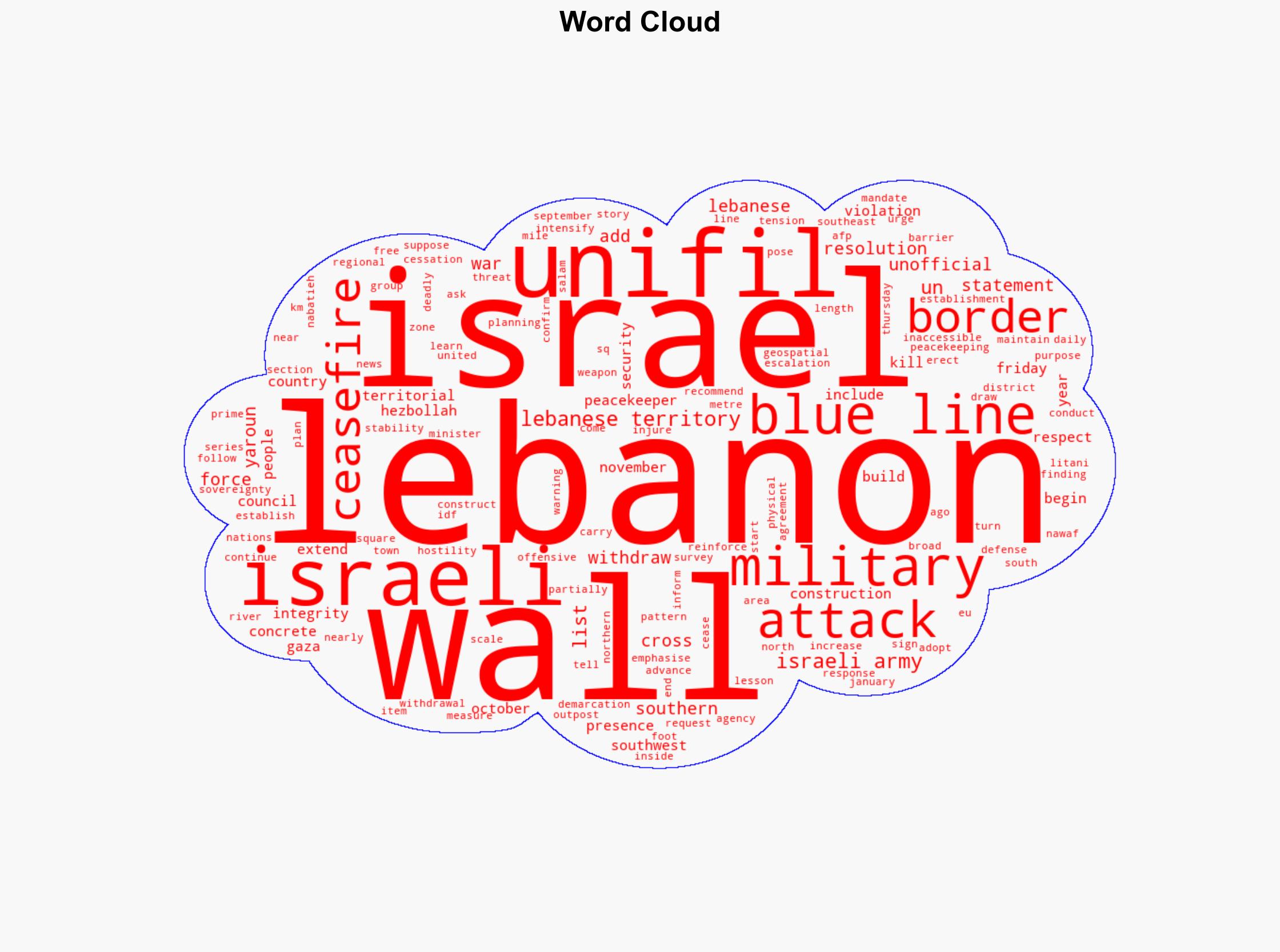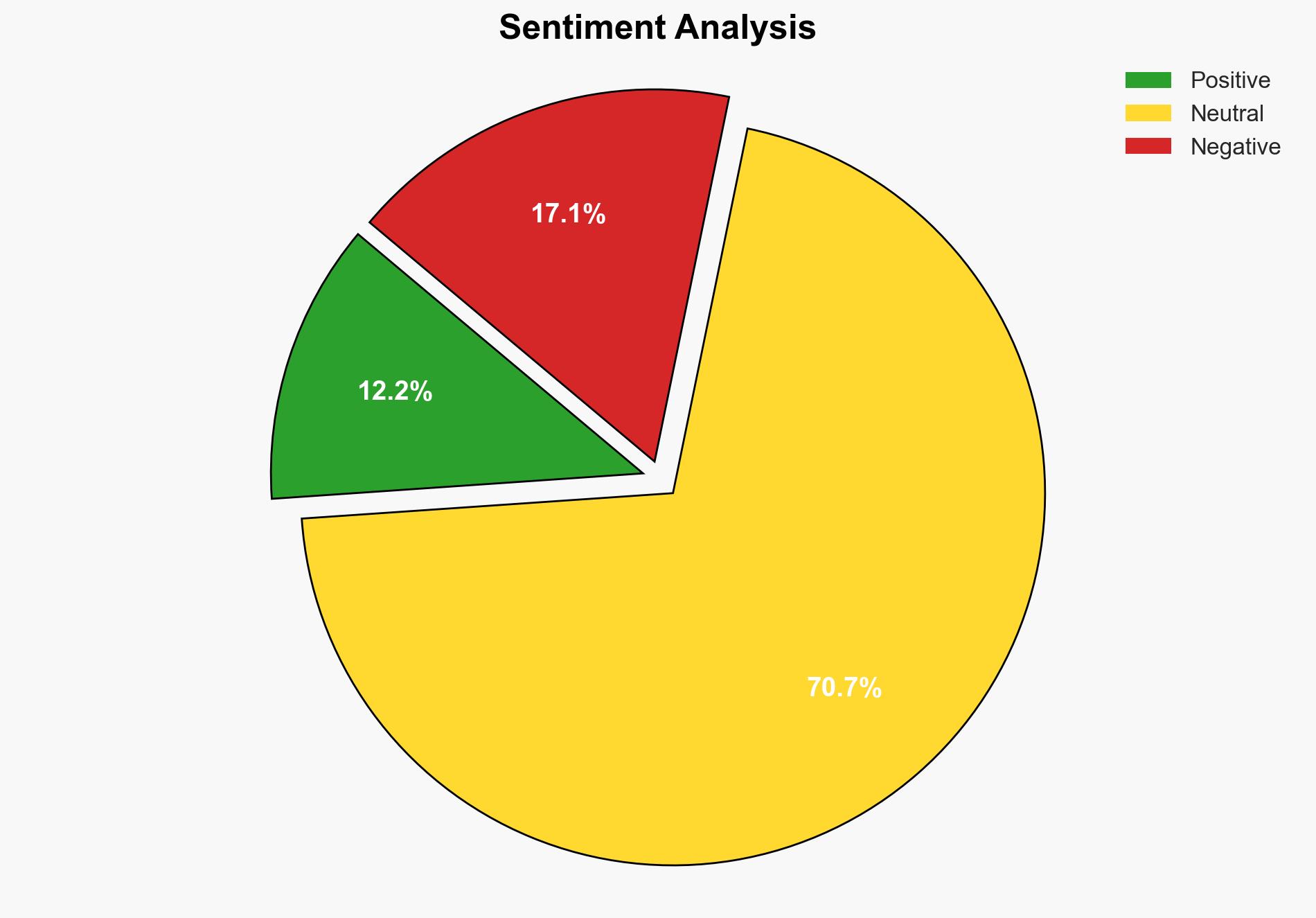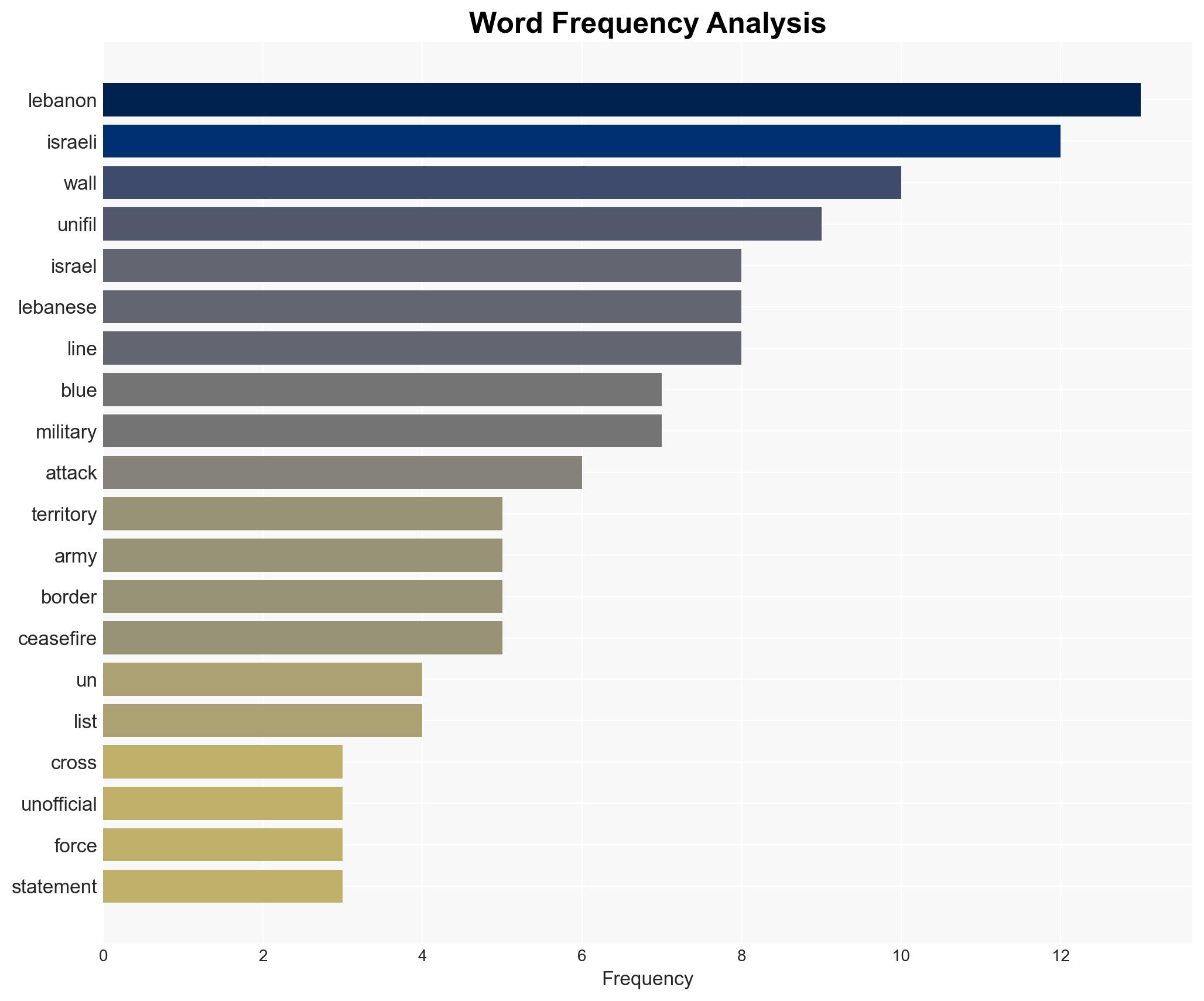UN peacekeepers say Israel built walls inside Lebanese territory – Al Jazeera English
Published on: 2025-11-14
AI-powered OSINT brief from verified open sources. Automated NLP signal extraction with human verification. See our Methodology and Why WorldWideWatchers.
Intelligence Report: UN peacekeepers say Israel built walls inside Lebanese territory – Al Jazeera English
1. BLUF (Bottom Line Up Front)
With a moderate confidence level, the most supported hypothesis is that Israel’s construction of the wall inside Lebanese territory is a strategic move to reinforce its northern border security in response to perceived threats from Hezbollah and regional instability. Recommended actions include diplomatic engagement to de-escalate tensions and ensure adherence to international resolutions.
2. Competing Hypotheses
Hypothesis 1: Israel’s construction of the wall is a defensive measure aimed at enhancing border security against Hezbollah and other threats. This hypothesis is supported by Israel’s stated intentions of reinforcing physical barriers and historical patterns of conflict in the region.
Hypothesis 2: The construction is an intentional provocation to escalate tensions with Lebanon, potentially to justify further military actions or territorial claims. This hypothesis considers the timing of increased military activities and the strategic advantage of controlling disputed territories.
Hypothesis 1 is more likely due to Israel’s consistent emphasis on security and defensive posturing, although the possibility of strategic provocation cannot be entirely dismissed.
3. Key Assumptions and Red Flags
Assumptions: It is assumed that Israel’s actions are primarily security-driven and not intended for territorial expansion. Another assumption is that UNIFIL’s reports are accurate and unbiased.
Red Flags: The timing of construction amid heightened regional tensions and the potential for miscommunication or misinterpretation of intentions by both parties.
Deception Indicators: Discrepancies between public statements and on-ground actions by Israeli forces could indicate strategic deception.
4. Implications and Strategic Risks
The construction could lead to increased political tensions and military skirmishes, potentially drawing in regional actors and affecting international relations. Cyber and informational warfare could escalate as both sides attempt to control the narrative. Economically, prolonged instability may deter investment and affect regional markets.
5. Recommendations and Outlook
- Engage in diplomatic dialogue with both Israel and Lebanon to reaffirm commitments to international resolutions and de-escalate tensions.
- Monitor for signs of military escalation and prepare contingency plans for potential conflict scenarios.
- Best Scenario: Diplomatic resolution leads to de-escalation and adherence to the Blue Line.
- Worst Scenario: Escalation into broader conflict involving regional powers.
- Most-likely Scenario: Continued low-level tensions with sporadic skirmishes and diplomatic efforts to manage the situation.
6. Key Individuals and Entities
Nawaf Salam: Lebanese Prime Minister, advocating for de-escalation.
UNIFIL: United Nations Interim Force in Lebanon, monitoring the situation.
Israel Defense Forces (IDF): Responsible for the construction activities.
7. Thematic Tags
Counter-Terrorism, Border Security, Regional Stability, International Relations
Structured Analytic Techniques Applied
- ACH 2.0: Reconstruct likely threat actor intentions via hypothesis testing and structured refutation.
- Indicators Development: Track radicalization signals and propaganda patterns to anticipate operational planning.
- Narrative Pattern Analysis: Analyze spread/adaptation of ideological narratives for recruitment/incitement signals.
Explore more:
Counter-Terrorism Briefs ·
Daily Summary ·
Support us
·





